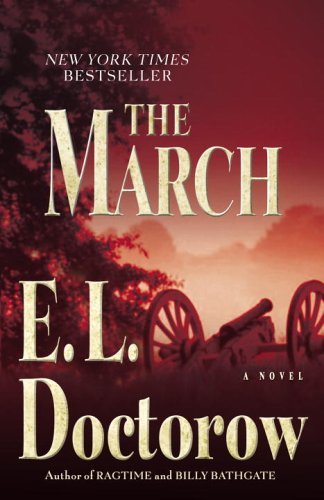What do you think?
Rate this book


363 pages, Paperback
First published September 20, 2005


"And, as they watched, the brown cloud took on a reddish cast. It moved forward, thin as a hatchet blade in front and then widening like the furrow from the plow. It was moving across the sky to the south of them. When the sound of this cloud reached them, it was like nothing they ever heard in their lives. It was not fearsomely heaven-made like thunder or lightning or howling wind, but something felt through their feet, a resonance, as if the earth was humming. Then, carried on a gust of wind, the sound became for moments a rhythmic tromp that relieved them as the human reason for the great cloud of dust."
"The symphonious clamor was everywhere, filling the sky like the cloud of red dust that arrowed past them to the south and left the sky dim, it was the great processional of the Union armies, but of no more substance than an army of ghosts."
"By now the last of the troops were straggling by, and behind them the parade of black folks who had chosen to follow the army. There were hundreds--men, women, and children--walking, riding in wagons, some limping along, and the sound of them was different from the sound of army men. No drumbeats here, no rumble of caissons, no military blare. It was a rhythmless festive sound that came up from them, a celebratory chatter almost like birds in a tree, from which laughter emerged or bits of song. It was the sound of collective excitement, as if these people were on some sort of holiday and on their way to a church meeting or a picnic. Children, with their high, piping voices, were skipping along or pretending to be soldiers, or running ahead and then running back."